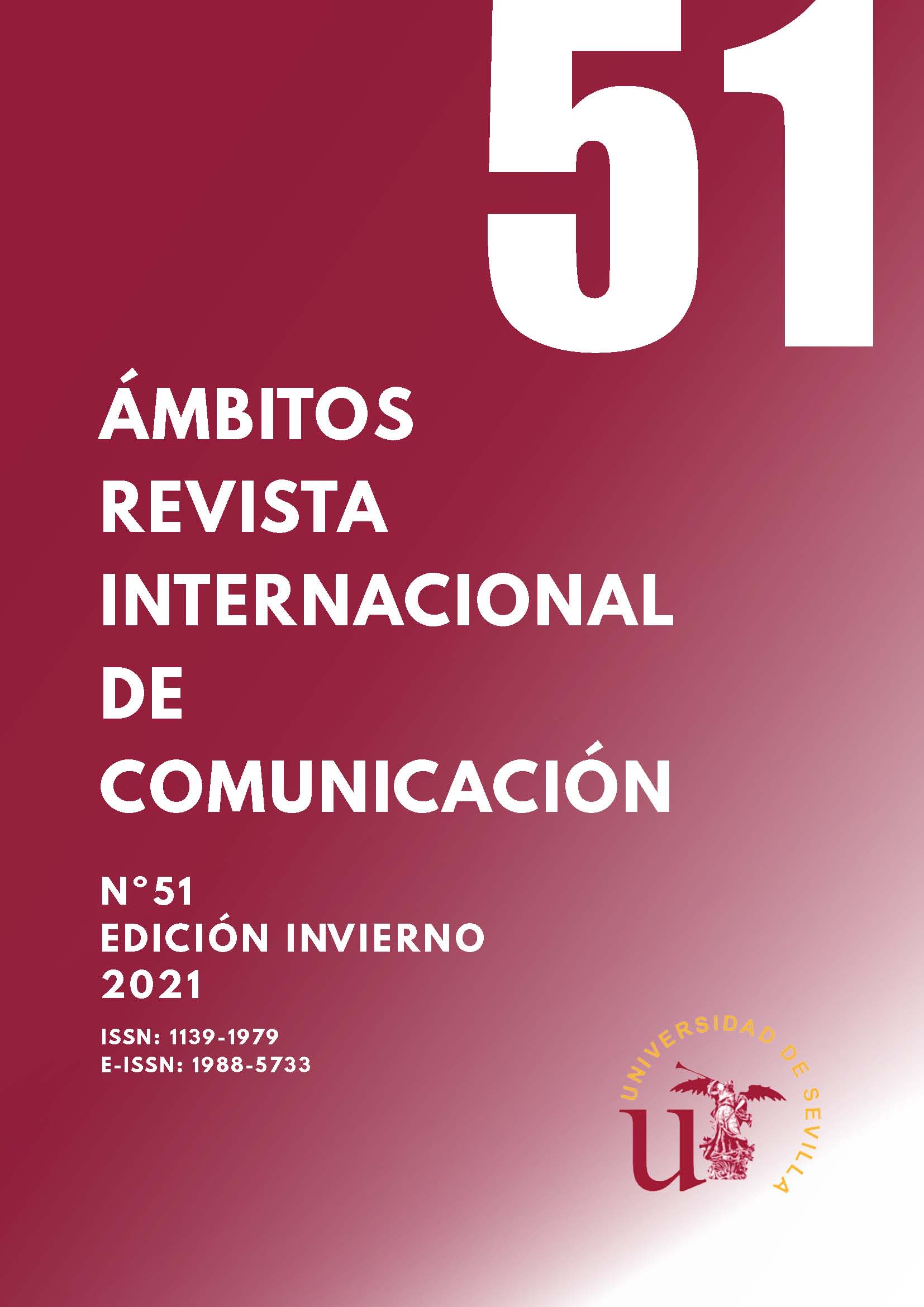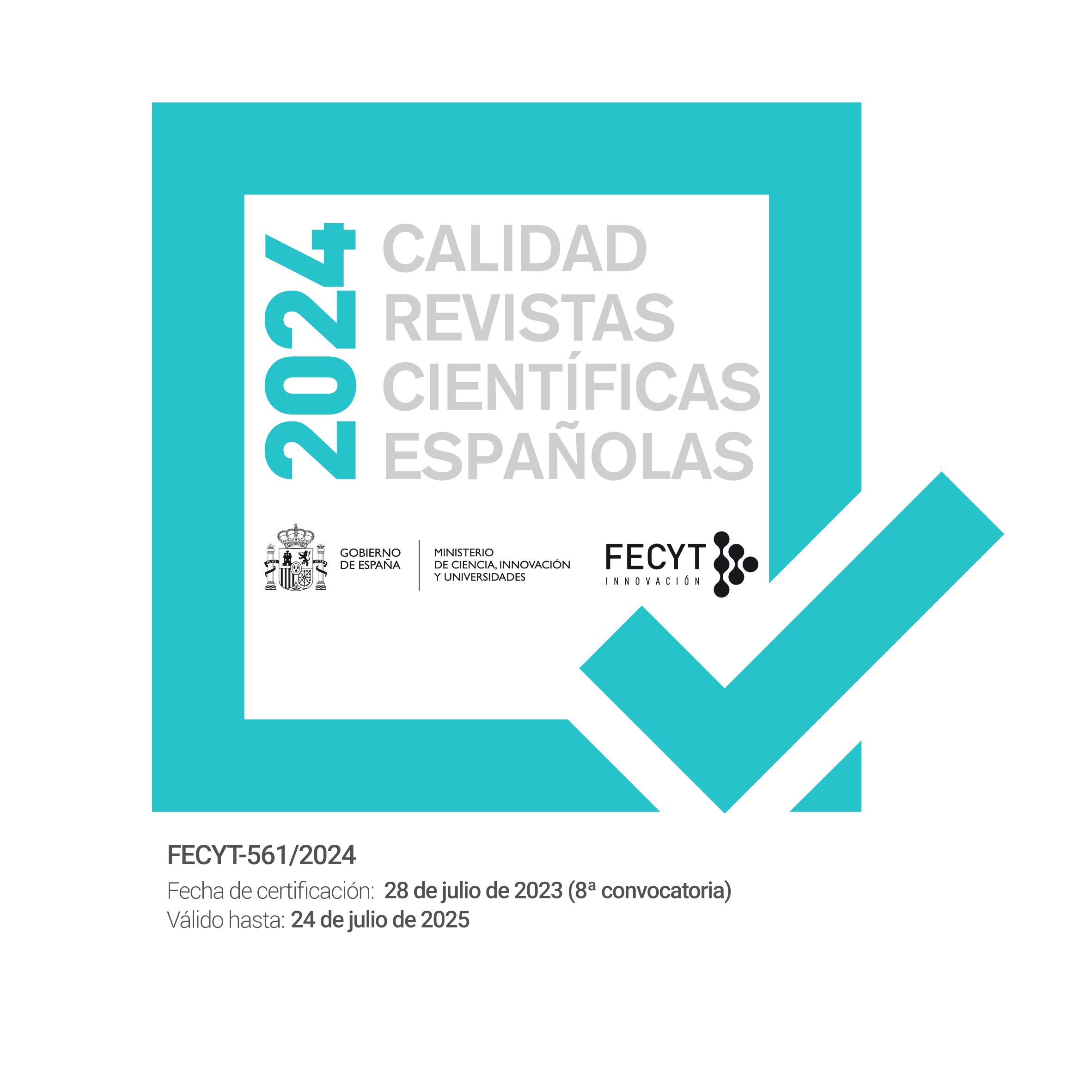Estructura mediática china: una aproximación al caso de China Central Television (CCTV)
Chinese media structure: an approximation to the case of China’s Central Television (CCTV)
DOI:
https://doi.org/10.12795/Ambitos.2021.i51.09Palabras clave:
China Media Group, China Central Televisión, medios de comunicación, control, televisión.Resumen
La superpotencia emergente China se ha convertido en los últimos años en una pieza fundamental en el tablero informativo a nivel mundial. Este estudio pretende ahondar en la estructura mediática china, centrando especial atención en el grupo televisivo público China Central Television. Desde una perspectiva diacrónica se busca entender las encucijadas
que subyacen de la misma; mediante un enfoque metodológico descriptivo centrado en el análisis de contenido se analizará en profundidad la forma de organización de los medios de comunicación y las administraciones que los controlan. En 2018 el gobienro chino lleva a
cabo un “Plan de Reforma Institucional estatal y del Partido de rofundización” cuyo objetivo principal se basa en la mejora de la opinión pública sobre China a escala mundial. Por consiguiente, para alcanzar este objetivo, se creó el conglomerado mediático transnacional China Media Group. Este ha segmentado y actualmente controla tres gigantes mediáticos chinos: a nivel televisivo, con China Central television (CCTV) y a nivel radiofónico con China National Radio (CNR) y China Radio International (CRI).
Esto es una muestra de las ansias de expansión del gobierno chino, debido a que mediante la emisión fuera de sus fronteras y la iversificación en informaciones en diferentes idiomas busca conseguir una mayor influencia a nivel internacional. De este modo, este país asiático aspira a exportar las singularidades chinas y por consiguiente a convertirse en un contrapunto al control único ejercido actualmente por Estados Unidos a nivel mundial. La comunicación es para China un punto clave de esta expansión.
Descargas
Citas
Aramberri, J. (2018). La China de Xi Jinping. Biblioteca Deliberar.
Borbón, A. Z. (2016). China: El despertar del dragón rojo. Boletín IEEE, (1), 901-933.
CaixaBank Research. (2017, octubre). China’s Game of Thrones: the keys and complexities of the political system.
Chieh Ho, P. (2020, abril 21). Goodbye, SAPPRFT (but not Chinese censorship). SupChina. https://bit.ly/2HstqpL
China ORG. (s.f.). China's Political System. https://on.china.cn/3kkK8Gr
Council on Foreing Relations. (2019, 27 septiembre). The Chinese Communist Party https://on.cfr.org/3dJfgwM
Cunhai, G. (2017). La imagen de China en América Latina en el siglo XXI. Orientando Temas de Asia Oriental, Sociedad, Cultura y Economía, 14, 11-44. https://doi.org/10.2307/j.ctvnp0jw3.15
Del Pozo, M. A. (2017, 27 enero). China, políticas y subconjuntos del Partido Comunista.
Delgado, L., y Ricardo, D. (2014). Confucianismo como humanidad: claves para complementar la modernidad. México y la cuenca del Pacífico, 3(9), 77-104. https://doi.org/10.32870/mycp.v3i9.472
Foix, T. A. (2011). Los periodistas políticos y los spin doctors como fuentes de la información periodística: una relación desequilibrada. En La comunicación pública, secuestrada por el mercado. Sociedad Latina de Comunicación Social, 89-90.
Guía de la Radio. (2018, 22 marzo). La República Popular China fusiona su radio y TV públicas en «Voice of China». https://bit.ly/2IiGyio
Jirik, J. (2003). The Myth of the CCTV Monopoly [conferencia] Digital News, Social Change &. Globalization, Hong Kong.
Jirik, J. (2009). The PRC’s “going out” project: CCTV International and the imagination of a Chinese nation.
Madrid Morales, D., Martínez Taberner, G., y Ollé, M. (2017). Comunicación y poder en Asia Oriental. Editorial UOC.
Nelson, A. (2013). CCTV’s international expansion: China’s grand strategy for media? The Center for International Media
Assistance (CIMA).
De Suso, B y Observatorio Iberoamericano de Asia (2007, mayo). La nueva Ley sobre el Derecho de Propiedad en China.
Ollé, M. (2007). China SL (sociedad líquida): cambio y polarización en la sociedad china contemporánea. Papeles del Este, 13, 1-21. https://doi.org/10.33115/udg_bib/cp.v6i11.22023
Ollé, M. (2017). China y medios de comunicación. L'ecosistema comunicatiu xinès: des del quiosc al panòpticon digital. Communication Papers, 6 (11), 9-26.
Organización mundial del Comercio. (2001, noviembre 23). Adhesión de la República Popular de China. https://bit.ly/2HmfL43
Reig, R. (2000). Medios de comunicación y poder en España. Prensa, radio, televisión y mundo editorial. Paidós.
Reig, R. (2010). La telaraña mediática. Cómo conocerla, cómo comprenderla. Editorial Comunicación Social.
Reig, R. (2011). Los dueños del periodismo. Editorial Gedisa.
Reig, R., y Labio, A. (eds.) (2017). El laberinto mundial de la información. Anthropos Editorial.
Reig, R., y Martín Ávila, A. J. (2011). La comunicación en los países emergentes: estructura mediática en China, Rusia e India. Telos: cuadernos de comunicación e innovación, 87, pp. 13.
Ríos, X. (2007). Mercado y control político en China. La transición hacia un nuevo sistema. Editorial Catarata.
Ríos, X. (2016). China Moderna. Tibidabo Ediciones S.A.
Rodríguez-Jiménez, F. J. (2015). "Charm offensive?":" poder blando" chino en las últimas décadas. Pensar con la historia desde el siglo XXI [actas] XII Congreso de la Asociación de Historia Contemporánea (pp. 6391-6412), UAM.
Salazar Navarro, S. (2012). Del otro lado de la Gran Muralla: La transformación del sistema mediático chino (1979-2009), del modelo de propaganda a la prensa comercial. Comunicación y sociedad, (18), 55-77. https://doi.org/10.32870/cys.v0i18.191.
Sarnelli, V. (2013). “UpClose” with the Chinese soft power in CCTV News.
Sarnelli, V. (2017). UpClose, broadcasting the Chinese dream CCTV news and China’s cultural policy presented to a global audience.
Shackleton, L. (2018, abril 13). China to abolish SAPPRFT as part of cabinet restructure. ScreenDaily. https://bit.ly/3dO2EEC
Tartaglione, N. (2018, abril 13). China To Ax SAPPRFT After Abolishment Of Presidential Term Limits; What’s Next? Deadline. https://bit.ly/3m8vIJL
The National People's Congress of the People's Republic of China. (s.f.). Constitución de la República Popular de China. https://bit.ly/2HjSu2l
T. Rawnsley, M. Y. (2014, noviembre 14). Reflections on the Transformation of CCTV Documentary.
Xinhua. (s.f.). XIX Congreso Nacional del PCCh. Spanish Xinhua Net. https://bit.ly/34k1jCi
Xinhua. (2018, abril 16). China unveils three state administrations on film, press, television. Xinhua Net. https://bit.ly/3obky8Z
Xu, B. y Albert, E. (2014). Censura de medios en China. Consejo de Relaciones Exteriores, 25, 243.
Zhou Qian, y JAMCO Online International Symposium. (2016). China’s International Television Broadcasting and Internal and External Challenges.
Descargas
Publicado
Cómo citar
Número
Sección
Licencia
Ámbitos. Revista Internacional de Comunicación es una revista de acceso abierto, lo que significa que todo su contenido está disponible gratuitamente para el usuario o su institución. Los usuarios pueden leer, descargar, copiar, distribuir, imprimir, buscar o enlazar con el texto completo de los artículos, o utilizarlos para cualquier otro fin lícito, sin solicitar permiso previo al editor o al autor. Esta definición de acceso abierto se ajusta a la Iniciativa de Acceso Abierto de Budapest (BOAI).

A menos que se indique lo contrario, todo el contenido de la edición electrónica se distribuye bajo una " licencia internacional Creative Commons Attribution-NonCommercial-ShareAlike 4.0 ". Puede consultar la versión informativa y el texto legal de la licencia aquí. Esto debe indicarse expresamente de esta manera cuando sea necesario.
En caso de aceptación del manuscrito, los autores ceden los derechos de la obra para su publicación a Ámbitos. Revista Internacional de Comunicación bajo el contrato de licencia Reconocimiento-NoComercial-CompartirIgual 4.0 Internacional (CC BY-NC-SA 4.0). Los autores conservan los derechos de autor y terceros están autorizados a copiar, distribuir y hacer uso de la obra, siempre que cumplan con los términos y condiciones establecidos en la licencia.
- Citar la autoría y la fuente original de publicación (revista, editorial y URL de la obra).
- No los utilice con fines comerciales.
- Si remezcla, transforma o crea a partir del material, debe publicar sus contribuciones bajo la misma licencia que el original.
Se puede encontrar más información en https://creativecommons.org/licenses/by-nc-sa/4.0/deed.es



















